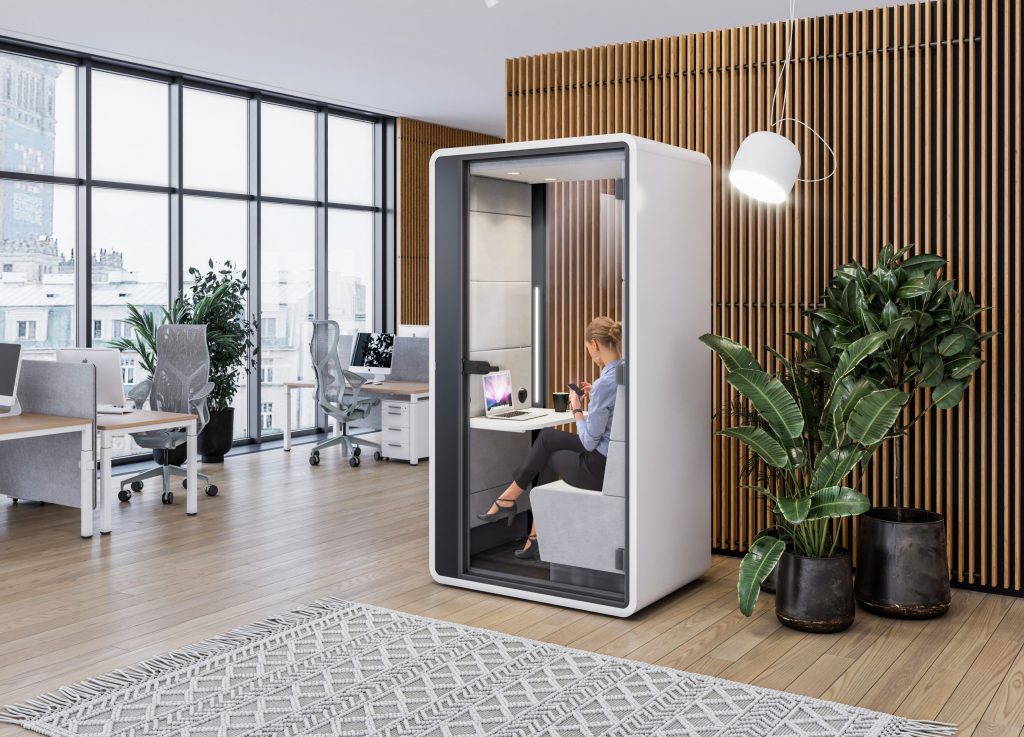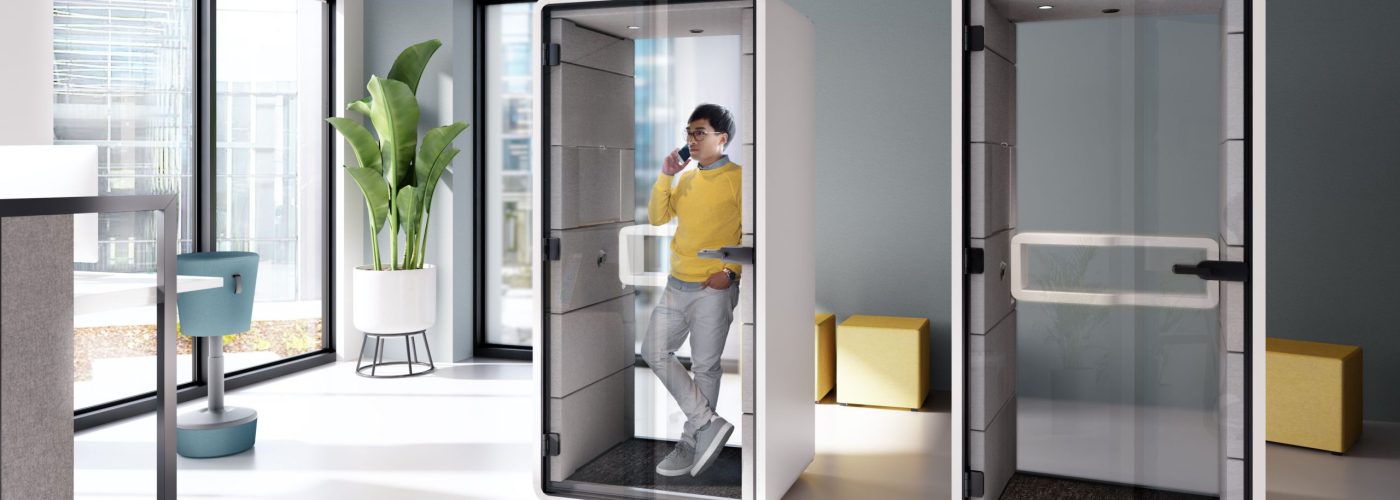Employees, especially in open-plan offices, often complain of increased fatigue and concentration problems. Daily noise from conversations, phones, keyboard sounds, and printers has a negative effect on mood and productivity. That’s why many companies are already thinking about how they can quiet offices and provide space for employees to perform their duties comfortably and productively. Several solutions are available to minimize noise in the workplace and create spaces that are effectively isolated from their surroundings. Read the article and learn how to provide pleasant acoustics for work.
In the office like a beehive – what are the sources of noise in the company?
In large corporate spaces and open-plan offices, various types of noise make it difficult to work efficiently. The noise comes not only from phone calls or lively discussions. It has four sources:
- Created by employees – includes conversations, the sound of footsteps, doors closing and opening, tapping on a keyboard or pushing back chairs.
- Office equipment – printers, scanners, photocopiers and other equipment often produce various sounds during their operation.
- Technical installation of the building – operation of air conditioning, ventilation, heating system and elevator.
- Sounds from outside – are associated with car traffic, streetcars or other work near the office.
The permissible noise level in the office is regulated by the PN-N-01307:1994 standard. According to this, it should not exceed:
- 35 dB – in rooms intended for office work requiring intense concentration,
- 40 dB – in areas designated for conceptual work,
- 55 dB – in administrative rooms,
- 65 dB – in secretariats and customer service offices.
In search of silence – how to deal with noise in the work environment?
Today’s range of office equipment provides many ways to reduce noise in the workplace. There are office walls with sound-dampening properties, panels and mats, as well as modern and multifunctional Hushoffice acoustic booths . With them, everyone can find a solution that suits their needs and significantly improves the comfort of the office.
Proper positioning of desks vs. noise
Too small spacing between desks can lead to increased noise and unnecessary disturbance to other workers. The optimal distance between workstations should be at least 1.5 meters. If it is closer, acoustic panels can be considered. It’s also a good idea to move or separate desks from noise sources such as printers, shredders and air conditioners. Properly setting up workstations is a compromise between providing privacy and the ability to communicate.
Organize places for teams to meet
Team meetings are part of the daily routine in many companies. If adequate space for meetings is unavailable, they can negatively affect the noise level in the office and the comfort of others. Consider a separate room or the use of special hushAccess.L conference booths for holding meetings and business talks in a quiet and private atmosphere. Depending on the chosen configuration, they can accommodate up to 6 people. The interior is equipped with electrical outlets and USB ports for charging mobile devices, as well as a ventilation system to ensure adequate air circulation. Installation of hushAccess.L acoustic booths is very simple and fast.
The right place to make phone calls
Nowadays, working in an office requires communicating with clients and colleagues remotely. However, making phone calls in open spaces can be problematic due to ambient noise and interference with others. The solution is to set aside special zones for this purpose. These can be well soundproofed rooms close to workstations so that you can quickly walk to them, or hushPhone soundproof phone booths . This type of solution not only enhances convenience, but also helps maintain the privacy and confidentiality of sensitive phone calls.
Arranging a quiet zone
To ensure proper acoustic conditions, consider arranging a quiet zone. Such a space allows employees to isolate themselves from their surroundings and focus on work that requires a lot of concentration. The quiet zone can consist of several individual workstations or modern acoustic booths for individual work. Inside the booth are special materials that absorb sound and prevent noise from spreading outside.
Green walls versus noise
Greenery in the office not only brings a pleasant atmosphere and aesthetics to the interior, but also helps reduce noise. Plants absorb sound, as well as help reduce stress levels and improve air quality. GreenWalls are the perfect complement to acoustic booths and are in line with a biophilic design, which is gaining great popularity.






